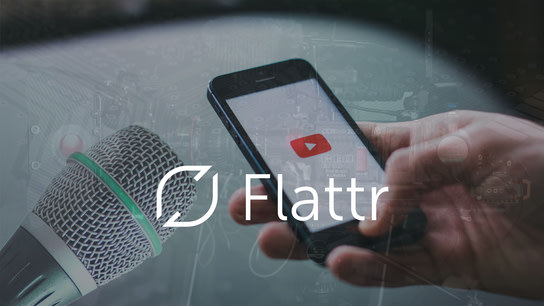Flattr have introduced new tools for recurring micro-subscriptions to support podcast and YouTube creators.
Flattr is a service where people can support their favorite creators on the web with a single subscription. Starting at 3 USD/month, Flattr lets people pay a fixed monthly sum that’s divided out among the creators they want to support; rather than having to manage many individual small subscriptions.
Flattr have been focused on their browser extension that temporarily collects web history and uses it to determine which registered creators should receive a portion of someone’s subscription.
Flattr have now quietly introduced new tools on for passively supporting podcasts and YouTube channels. YouTube subscriptions have been in testing through Flattr Labs sine .
Flattr will automatically give a micro-donation from the user’s monthly subscription to each new episode or video from the creators they’ve subscribed to. The size of the donation depends on how many creators a user supports and how big their monthly contribution is. The new subscription-oriented systems draws money from the same subscription as the Flattr extension.
Users can subscribe to any iTunes Store-listed podcasts and any YouTube channel through Flattr; but only creators who’ve claimed their domains, podcasts, YouTube channels, etc. will receive funds. The new subscription tools are sort of hidden away in the account menu on the main Flattr website.
Flattr haven’t yet introduced subscriber-only podcast feeds or other benefits to entice subscriptions from contributors. However, podcasters and YouTubers should consider claiming their feeds and channels even if they don’t intend to promote Flattr to their audiences. Flattr can be an alternate revenue stream for creators so they don’t grow too dependent on one donation platform like Patreon.
Podcasters and YouTube creators need only linked their podcasts or YouTube channel to a Flattr account to claim contributions from their audiences. Specifically, YouTube creators must login to their YouTube account through Flattr to claim their channels. Podcasters must add a link to a dedicated page for their podcast on Flattr to their podcast feed’s description to claim a podcast.
There’s no word yet as to whether Flattr will launch similar schemes for subscribing to bloggers, open-source developers, and other types of content creators.
If you’re familiar with Flattr, you may recognize this as a more focused relaunch of the recurring Flattr subscription system that was first introduced in .
